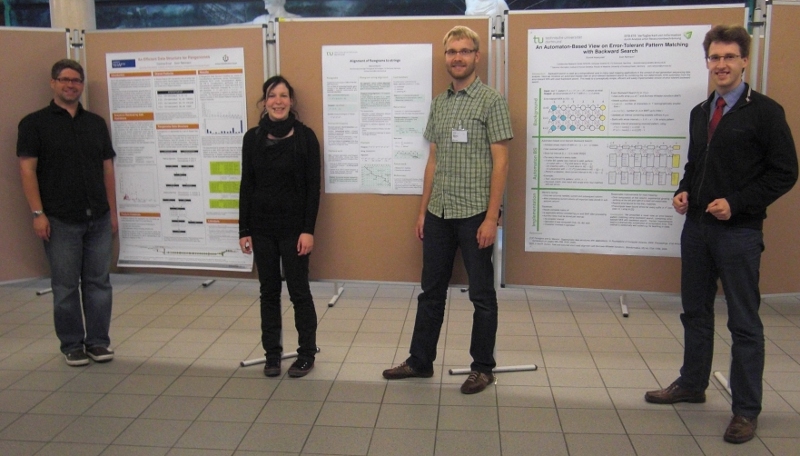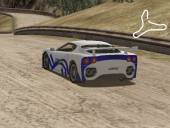Table of Contents
News
European Workshop on Computational Geometry 2010
In der Zeit vom 22.-24. März 2010 findet an der Fakultät für Informatik der 26th European Workshop on Computational Geometry statt. Diese internationale Tagung wird durch den Lehrstuhl Informatik XI (AG Vahrenhold) organisiert.
Best poster award at the GCB 2012
PhD candidates Corinna Ernst (Genome Informatics, Uni Essen) and Marcel Martin (Chair 11, TU Dortmund), both supervised by Sven Rahmann (Uni Essen, previously Chair 11) share second place for their posters presented at the German Conference on Bioinformatics (GCB) in Jena.
Corinna's poster “An Efficient Data Structure for Pangenomes” shows how to represent the differences and commonalities among the DNA sequences of all genomes of a species in a memory-efficient and meaningful way.
Marcel's poster “Alignment of flowgrams to strings” describes his work on automatic error-correction for DNA sequencing technologies that use so-called “flowgrams” as an intermediate representation of DNA.
Although only a single second place was going to be awarded, the jury decided otherwise when both posters received an equal number of votes in two consecutive rounds of voting.
From left to right: Sven Rahmann, Corinna Ernst, Marcel Martin and Dominik Kopcynski (also Chair 11)
Car Setup Optimization Competition @ EvoStar 2010: Results
Somewhere between games and optimization, there is time-constrained optimization of car setups under uncertainty, as is usually done in real life, e.g., by technicians of a Formula-1 team. In cooperation with the CI in Games group at the Politechnico di Milano, the Computational Intelligence group at LsXI organized a 'near' real-world optimization challenge. The competition is over, but the software is still there:
Car Setup Optimization Competition Rules and Software
This year's winner is: Jorge Muñoz - Universidad Carlos III de Madrid, Spain
See here for a Result Presentation and a Video of Highlights
Bioinformatik mit Workshop auf dem Schülertag 2009 vertreten
Die Bioinformatik wird auf dem Schülertag, den die Fakultät für Informatik der TU Dortmund am 18.11.2009 veranstaltet, mit einem Workshop zum Sequenzvergleich vertreten sein. Viele Gene des Menschen und der Maus sind nahezu identisch oder sehr ähnlich. Wie kann man in zwei (sehr langen) DNA-Sequenzen die Unterschiede so darstellen, dass man sie auf den ersten Blick erkennt? Umgekehrt, wie kann man in auf den ersten Blick sehr verschiedenen DNA- oder Proteinsequenzen noch gemeinsame Abschnitte entdecken, die möglicherweise auf einen gemeinsamen Ursprung hindeuten? Wir werden gemeinsam Methoden zum Sequenzvergleich erarbeiten und Beispiele betrachten. Es wird schnell deutlich werden, dass man diese Arbeit nicht manuell erledigen, sondern einem Computer überlassen möchte.



